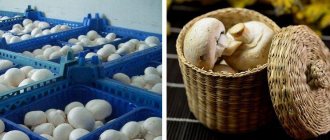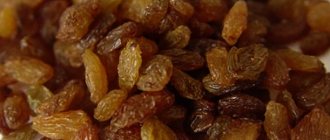Canned food from various products (meat, fish, vegetables, mushrooms) are very popular. They are often taken not only on hikes, but also used at home. They are valued for their good taste and the possibility of long-term storage even outside the refrigerator. As a rule, they are produced in metal or glass jars, in which their shelf life before opening can reach several years.
Factors affecting shelf life
How long canned food can be stored depends on the following conditions:
- Compound . Depending on the type of raw material, the maximum shelf life may vary significantly. Meat and fish products can be stored for 4-6 years. Offal and vegetables spoil faster.
- Temperature regime . Most types of canned food are well preserved at temperatures from 0 to +25°C. In a cool place, such products last longer.
- Packaging integrity . If the factory container is damaged, the product should be consumed immediately. After opening or depressurizing the container, the contents can be stored for several days only in the refrigerator.
- Humidity . It is not recommended to keep products in cans in a damp place. Moisture causes rust, which can ruin the product.
- Production technology and additives used . Manufacturers often use special preservatives to significantly improve the shelf life of such products.
Which lids to use
It is not so easy to choose the right size lid for a can. In this case, you can use several basic recommendations:
1) The diameters of many tin cans coincide with the dimensions of the nylon lids that are used for preservation. In some cases the lid is a little smaller so it can be pre-heated in hot water. Thanks to this, you can achieve good density.
2) Coffee cans cope with such tasks.
3) Lids from tea cups fit the tin cans.
4) Rewind with plastic film. It is a universal solution, as it provides good density for storing canned food.
Storage rules
Requirements for storage conditions can vary significantly depending on the type of canned food, method of preparation and packaging. If storage conditions are not met, the container often swells . Such products should not be purchased or used. Also, you should not buy the product in damaged containers.
Canned products must be stored in a dry, dark and cool place. The optimal temperature for long-term storage is 0-+8°C . It is advisable that the humidity does not exceed 75% .
Canned meat
The most popular are canned meat products. They can consist of pure meat raw materials or with the addition of offal , animal and vegetable fats. During production, spices and salt are added to the composition, which not only improve the taste, but also extend the maximum permissible shelf life.
Meat products are usually produced in iron cans , which should preferably be kept in a dry place to prevent the formation of rust. If the product is refrigerated, its nutritional properties are preserved longer. It is recommended to keep such products in large quantities in the cellar. Sudden temperature fluctuations should not be allowed.
Sterilized products made from raw meat are usually stored for 3 years , stamped ones - up to 2 years . Pasteurized products can be stored for up to 6 months, but only at temperatures up to +5°C . It is better to put such products in the refrigerator immediately after purchase. The storage time should not exceed the expiration date indicated on the packaging.
Stew
This is the most popular type of canned meat products. Available in tin and glass jars, less often in plastic retort bags. For long-term storage, you should choose the product in an iron container. In such packaging, the stew does not spoil for 4-6 years , even if it is at room temperature. Give preference to containers sealed by welding ; they are least susceptible to depressurization.
After opening, the product must be transferred to a glass or ceramic container. This is true not only for stew, but also for all other types of canned food packaged in a tin container. Retort bags benefit from compactness and lightness, but are designed for storage for 2 years.
If the stew is kept indoors, it is advisable that the ambient temperature does not exceed +25°C . If the product is made only from meat and animal fat, such stew usually does not spoil even in 10-15 years .
Canned fish
Such food products are no less popular than meat products. Shelf life and storage are influenced by 2 main factors:
- Type of fish.
- Canning technology.
In most cases, the maximum shelf life is no more than 2 years from the date of production. How long a product can be stored after opening the container is usually indicated on the packaging. As a rule, the shelf life of opened canned food does not exceed 3 days . After opening, the food must be placed in a glass container and placed in the refrigerator.
Pasteurized canned fish should be kept in the refrigerator at a temperature from 0 to +5°C . The maximum temperature for products in their own juice is +10°C, with the addition of oil - +20°C . The shelf life usually ranges from 6 months to 3 years , depending on the composition and method of canning.
Fish preserves are considered a separate type of canned food . They are not sterilized during the cooking process. A small amount of salt is added to the composition. Therefore, such products can be stored for up to six months exclusively in the refrigerator.
After opening the package
Once opened, canned meat can be stored in a tin container for a maximum of 2 days . In glass containers this period is extended to 7 days . Therefore, after opening a metal container, it is advisable to immediately transfer the product to glass . When metal comes into contact with air, it begins to oxidize, causing the contents to deteriorate very quickly.
Once opened, food can be re-canned . To do this, it should be loaded into a glass jar and topped with melted fat, which was contained in the factory container. In this case, the product does not deteriorate for 5 months .
If food remains after consumption, it should be frozen immediately . To do this, use a tightly sealed container. It is better not to re-freeze. Frozen canned food can be stored for up to 2 months.
Fish products should not be left in metal containers at all. They can only be kept in the refrigerator in glass or ceramics. Opened product can be stored for no longer than 2 days . If you completely fill the fish with oil, this period can be extended to 4 days . Preserves must be consumed within 8 hours after opening as they are not sterilized.
Vegetable products should also be immediately placed in glass containers. It is not necessary to drain the liquid. Once opened, such products can be stored for up to 2 days in the refrigerator . If food is not consumed during this time, it should be frozen.
Canned mushrooms cannot be stored in metal. It is also better to use a glass container for mushrooms. There is no need to pour out the brine. The product can be stored in the refrigerator for up to 4 days .
Where to store tomatoes
It’s not enough to find a way to store tomatoes for a long time; it’s important to determine the ideal place to place them
How to store tomatoes in the refrigerator
Store tomatoes only in the bottom tray of the refrigerator. It is there that there is a special compartment where favorable conditions are created for vegetables
It is important to place each copy, handle up, wrapped in paper
If the fruits do not touch, they can lie for a very long time.
Ripe vegetables can last up to a week, slightly greenish ones up to two to three weeks. The main thing is to stop using plastic bags; they shorten the life of vegetables by increasing the internal moisture level.
How to store tomatoes in the freezer
Freezing tomatoes is a good option. Freezing rules:
Types of freezing tomatoes:
Tip: when freezing, wrap a plate or board in a packaging bag, and place pieces of tomatoes on it; after freezing, remove the bag along with the tomatoes.
How to store tomatoes in a cellar or basement
Storing recently ripened vegetables on basement shelves is considered optimal. There are excellent conditions regarding temperature and humidity.
How to store tomatoes in trays and boxes
When a suitable place for storing tomatoes has been found, suitable containers are selected.
Features of container selection and storage:
How to determine if canned food has gone bad
You can understand that a canned product is no longer suitable for consumption by the following signs:
- The presence of swelling on the bottom and lid of the package.
- Smudges on the walls of the jar.
- Dents, rust and chips on packaging. The container could become depressurized, which could allow air to enter and spoil the product.
- Unpleasant, rotten smell after opening.
- The color of the product is unnatural for the raw material.
You should not consume any type of canned food that shows signs of spoilage or has expired. Harmful microorganisms develop in them. A spoiled product can not only cause severe poisoning, but also the development of serious diseases, including botulism.
Salt
Shelf life: more than 10 years
Throughout almost the entire history of mankind, salt, in addition to its culinary properties, served as an excellent natural preservative. With its help, people have extended the life of many products, even such capricious ones as, for example, fish. Obviously, the salt itself can also be stored for decades. Despite the fact that this product does not have any problems with microbiology, it is still better to approach its storage carefully. The packaging must be airtight, otherwise the salt will absorb moisture from the surrounding air and turn into stone. However, it will not lose its properties; if desired, it can be crumbled again and eaten.
Suitable containers to properly store cereals
- You can store cereals in metal cans. Although the material is considered reliable and of high quality, make sure that rust does not form on them. Dispose of damaged metal utensils immediately.
- You can store cereals in glass containers. You can buy these in many stores, and they are great for storing food. If you like glass containers, decorating regular jars is a good idea.
- You can store cereals in plastic containers. A big plus of such containers is their low weight, which means less load on the cabinet shelf.
- You can store cereals in ceramic dishes. Perhaps the most suitable container for storing cereals: the natural material retains freshness well. The only negative is the heavy weight, which not every shelf can support.
- You can store cereals in a thick fabric bag. To store flour, it is best to choose a bag made of natural fabric. Sift the flour and place a piece of foil or a metal spoon in it.
Whatever the container, it should be prepared before use: washed with detergent, or even better, sterilized and dried. Cereals should be stored in a dark, dry place, such as on the bottom shelves of a kitchen cabinet with lockable doors.
Does the product have an expiration date?
By Decree of the Government of the Russian Federation No. 720 of June 16, 1997, canned fish are classified as products that may pose a danger to human life and health. According to Art. 472 of the Civil Code of the Russian Federation and the Law “On the Protection of Consumer Rights”, the manufacturer is obliged to determine an expiration date for this product, after which it can no longer be sold. This period is counted from the date of manufacture indicated on the packaging and guarantees the consumer:
- complete product safety and compliance with quality requirements;
- a ban on the sale of expired or expired products.
Labeling of canned vegetables and fruits
This type of canned product usually has a three-line label. Thus, in the first row it is indicated:
- assortment index of a specific product, consisting of three digits;
- one or two numbers indicating the number of the shift or team.
In the second row you can find out:
- day of production;
- month;
- year.
The third row notes:
- index of the industry to which the manufacturer belongs. In a particular case, it will be either “K” or “KS”;
- index of the company that produces this product.
There are also cases of container lithography. Then you will be able to see:
- two digits of the shift or team number;
- day of production;
- month;
- year.
Adviсe
Don't seal up more than you can eat; long-term storage will most likely turn into a waste of time when it turns out that you have to throw away what you prepared so carefully. Balance your appetites and take into account past experience - if you know that your family does not like peppers or do not eat jams, use other products or try new recipes. By the way, if you want to try something new, don’t do it on an industrial scale right away, you may not like the result, and your time and energy will already be wasted.
You should not store canned food in the following places:
- toilet;
- under the sink near the trash can;
- near a stove or radiators;
- under the bath;
- passages where there is a risk of tripping and hitting it;
- hard-to-reach niches or cabinets, when there is a risk of dropping the jar when taking it out.











